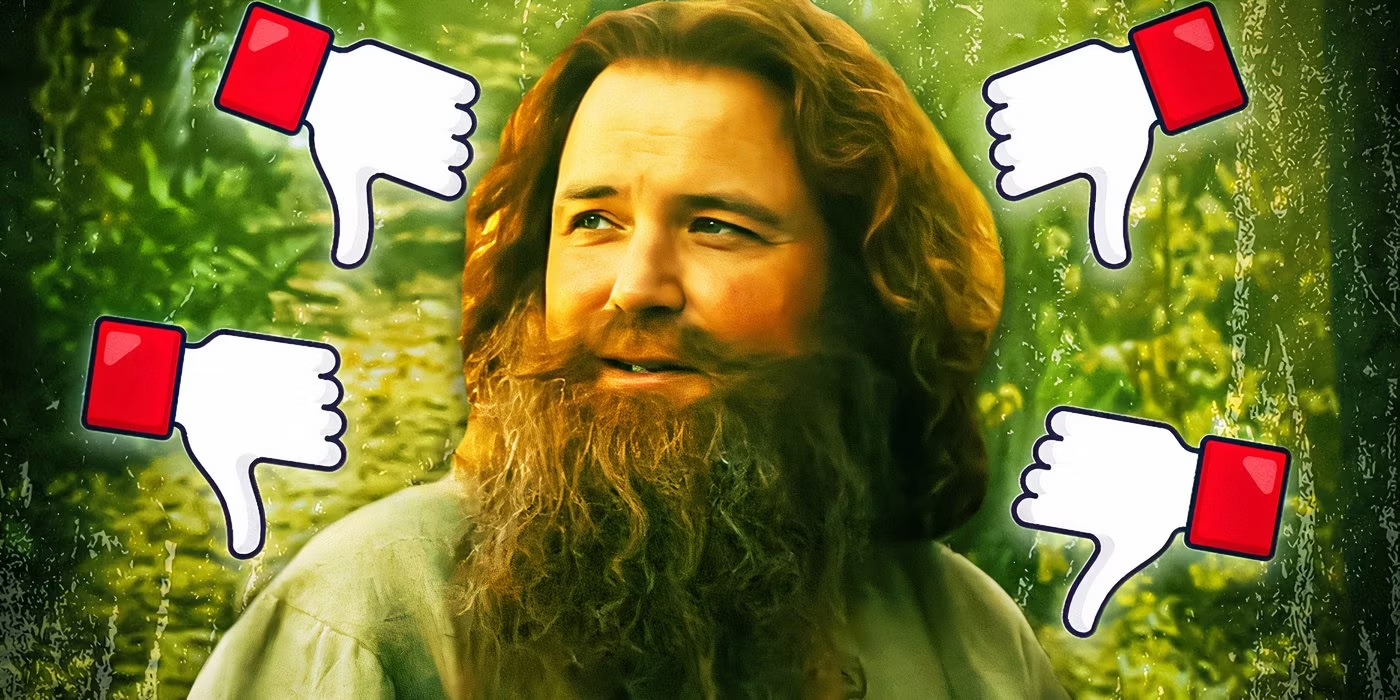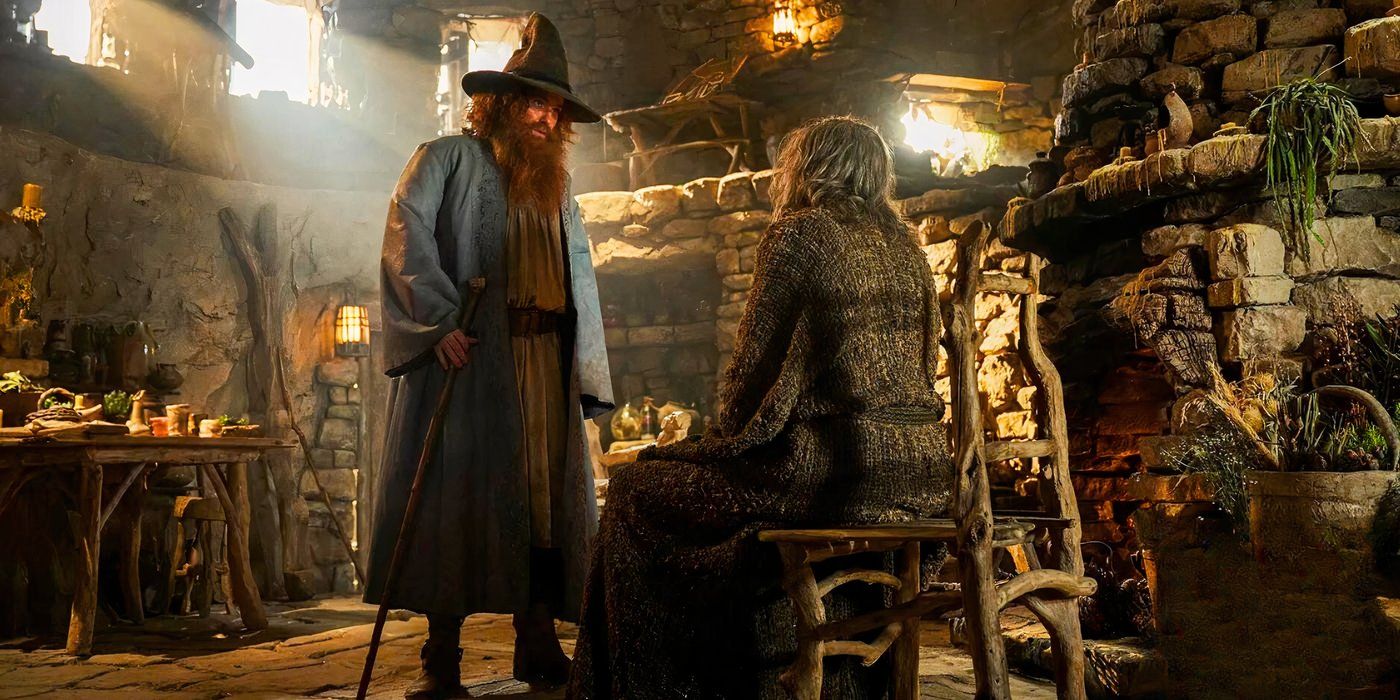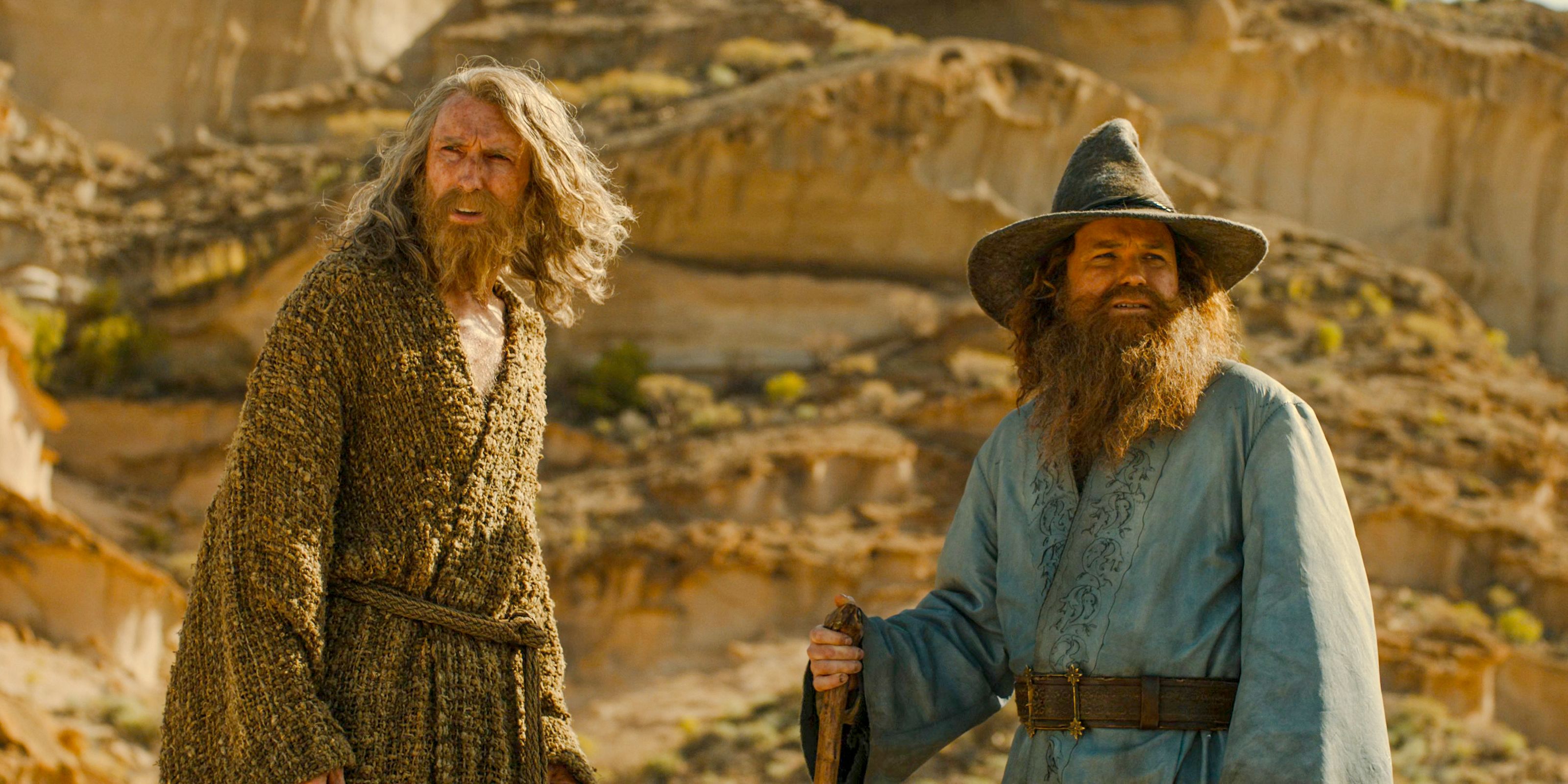
Tom Bombadil (Rory Kinnear) has appeared in The Lord Of The Rings: The Rings Of Power for two episodes as a somewhat aloof magical mentor to the Stranger (Daniel Weyman). With the appearance of this modestly mentioned character, who first featured in a 26-stanza poem, written by Tolkien in 1934 titled The Adventures Of Tom Bombadil, comes some obvious questions about who he is and what (if at all) his adaptation should be in The Rings Of Power.
After Bombadil’s first appearance in Tolkien’s poem, Tolkien included him in The Lord Of The Rings: The Fellowship Of The Ring, only to be left out of Peter Jackson’s movie adaptations because Bombadil added nothing to the narrative (Tolkien admits as much of Bombadil’s character in one of his letters). There is no need for Bombadil to appear in The Rings Of Power, especially since the show’s creators are making him more than Tolkien (or his fans) wanted. As a result, one of Tolkien’s most original and enigmatic inventions is now in danger of becoming something altogether more ordinary.
The Rings Of Power Has Turned Tom Bombadil Into A Classic Magical Mentor Figure

Untrue to the character created by Tolkien, The Rings Of Power quickly reveals Tom Bombadil to be a mentor to the Stranger, who desires to master magic. Not only does Bombadil appear to accept this role, but he also reveals that he has played this part before by training the Dark Wizard.
In Tolkien’s Fellowship Of The Ring , when Bombadil interacts with the ultimate symbol of power, the ring (the foundational icon to The Rings Of Power ), he stays visible, as it holds no dominion over him.
Tolkien’s Bombadil represents pacifism outside the forces of good and evil. He is a character who has no desire to take part in the struggle for power. In Tolkien’s Fellowship Of The Ring, when Bombadil interacts with the ultimate symbol of power, the ring (the foundational icon to The Rings Of Power), he stays visible, as it holds no dominion over him. Yet, in The Rings Of Power, Bombadil not only cares about the outcome of Middle Earth, but he seems to be actively training participants in the war of Good vs. Evil. This is a massive change to the character Tolkien wrote, turning him into a lazy stereotype rather than something more metaphorical.
The Problem With Adapting Tom Bombadil In Live-Action

Although Rory Kinnear does an admirable job embodying a version of Bombadil, there are several traits his character lacks to stay true to Tolkien’s vision. From his appearance to his entire outlook, the Bombadil in Tolkien’s vision would struggle to exist in the role created for him in The Rings Of Power.
Tolkien’s Bombadil wears bright colors: a blue feather in his hat, yellow boots, a bright blue jacket, and a face as red as a ripe apple. He also speaks in poetic meter and often sings his dialogue. Kinnear’s Bombadil does often sing under his breath, but he lacks the boisterous folly usually associated with Tolkien’s version. His character is separate enough from the understanding of men, Hobbits, and Elves, that he would appear silly on-screen, not someone who could (or would) take part in a war for Middle-earth.
The Rings Of Power is all about a struggle for power that Bombadil rejects.
The biggest problem with adapting Tolkien’s Tom Bombadil to The Rings of Power is that he cares so little about the show’s entire premise. Tolkien’s Bombadil is a fearless and merry fellow who collects white water lilies and sings to trees; he is a master of nature. The Rings Of Power is all about a struggle for power that Bombadil rejects. Perhaps Tolkien’s Bombadil could be adapted as a brief and confusing refuge from the struggles in The Rings Of Power, but he would never be a driving force in its narrative. His characterization in the show contradicts this fundamental truth.





